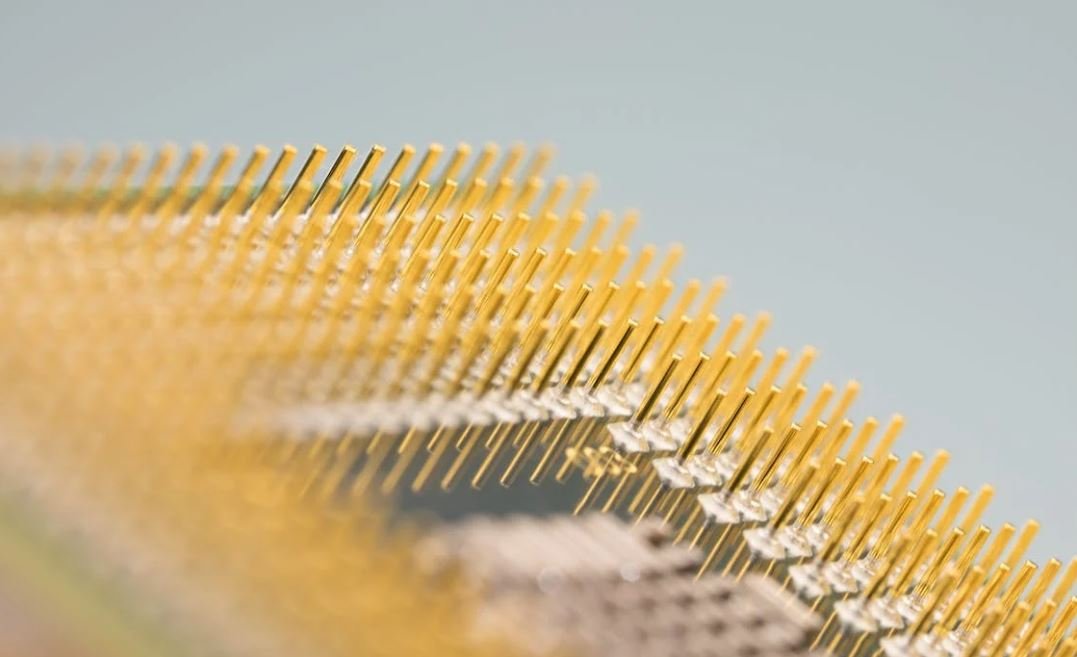Deepfake Live Stream
Deepfake technology has been rapidly advancing in recent years, enabling the creation of hyperrealistic videos that can be misleading and pose serious threats. With the emergence of deepfake live streams, the potential for manipulation and misinformation has reached new heights, demanding increased vigilance and critical thinking from viewers.
Key Takeaways
- Deepfake live streams utilize artificial intelligence to create realistic videos in real-time.
- They can be used to spread misinformation, manipulate public opinion, and even facilitate identity theft.
- Vigilance and critical thinking are essential when consuming live streams to ensure reliable information.
**Deepfake** live streams use sophisticated algorithms and neural networks to generate **convincing** videos in real-time. These deepfakes can be manipulated to show **public figures** saying or doing things they never actually did, or even create entirely fabricated scenarios that appear realistic.
It is important to recognize that the authenticity of deepfake live streams cannot be taken for granted. **Artificial intelligence** algorithms have become remarkably adept at generating lifelike videos that are difficult to distinguish from reality. Even experts may struggle to detect deepfakes without careful scrutiny.
**Online platforms** need to be proactive in implementing measures to detect and combat deepfake live streams. Employing AI-driven detection tools and actively monitoring for suspicious activity can help minimize the spread of misinformation and protect users from potential harm.
The Implications of Deepfake Live Streams
1. **Misinformation**: Deepfake live streams can be used to spread false information and manipulate public opinion, which can have far-reaching consequences. Misleading live streams can shape political narratives, incite social unrest, or damage reputations.
*Imagine a deepfake live stream showing a world leader making inflammatory statements that never actually occurred, sparking international outrage and potential conflicts.*
2. **Identity Theft**: With the ability to manipulate live video footage, deepfake live streams present a serious threat to personal privacy and security. Cybercriminals can use this technology to impersonate individuals by overlaying their faces onto someone else’s body, potentially causing significant harm to their targets.
*Consider the implications of deepfake live streams being used to create convincing videos of individuals engaged in illegal or compromising activities, tarnishing their reputation and causing significant damage to their personal and professional lives.*
Data and Statistics
| Year | Number of Deepfake Incidents |
|---|---|
| 2017 | 8 |
| 2018 | 206 |
| 2019 | 748 |
The above table shows the alarming increase in deepfake incidents over the years, highlighting the pressing need for effective countermeasures and awareness.
Combatting Deepfake Live Streams
- **Education**: Raising awareness about deepfake technology and its potential misuse is crucial. By educating the public and promoting media literacy, individuals can better evaluate the authenticity of live streams and make informed judgments.
- **Technological Solutions**: Developing advanced detection algorithms and tools to identify and flag deepfake live streams can help mitigate this growing threat. AI-driven software can analyze videos in real-time, detecting inconsistencies and anomalies that may indicate the presence of deepfakes.
- **Collaboration**: Cooperative efforts between government agencies, tech companies, and cybersecurity experts are necessary to tackle the challenges posed by deepfake live streams. Sharing knowledge, resources, and best practices can contribute to a more effective response.
It is crucial to remain vigilant and critically evaluate the information presented in live streams. By doing so, individuals can help limit the spread of misinformation and protect themselves from potential harm.
References
- “Deepfake Faceswapping Arrives on Live Streams with Avatarify.” Digitaltrends.com. Digital Trends, 2021. source.
- “Deepfakes and the Internet: Industry Perspectives and Policy Implications.” Technology and Science Dynamics Journal, vol. 2, no. 1, 2021, pp. 1-61. source.

Common Misconceptions
Deepfake technology is only used for nefarious purposes
– Deepfake technology has gained a negative reputation due to its potential use in spreading disinformation and manipulating media.
– However, deepfake technology can also be used for legitimate purposes such as entertainment, art, and education.
– It is important to recognize that not all deepfakes are created with malicious intent, and there are ethical applications for this technology.
Deepfake videos are easily detectable
– While it is true that there are certain telltale signs that can indicate a video has been deepfaked, modern deepfake algorithms have become increasingly sophisticated.
– Deepfake algorithms can now generate realistic-looking videos that are challenging to detect without specialized tools.
– It is crucial to stay vigilant and rely on advanced detection techniques and AI-powered software to identify deepfake videos accurately.
All deepfake videos present a significant threat to truth and society
– While deepfake technology does raise concerns about the potential spread of disinformation, not all deepfake videos carry the same level of threat.
– Context and the intent behind a deepfake video play a vital role in determining its impact on truth and society.
– Rather than dismissing every deepfake as a threat, it is essential to assess each case individually and consider the wider social implications.
Deepfake technology is limited to video manipulation
– Deepfake technology is not restricted to manipulating videos alone. It can be used to create convincing audio deepfakes as well.
– Through voice synthesis and speech manipulation techniques, deepfakers can generate realistic-sounding voice recordings.
– This technology poses a significant risk for voice fraud, as it can potentially be used to impersonate others or manipulate audio evidence.
Only experts can create deepfake videos
– In recent years, the availability of user-friendly deepfake software has increased, making it easier for anyone with basic technical knowledge to create deepfake videos.
– While professional-grade deepfakes may still require advanced skills, the barrier to entry has lowered significantly, enabling a wider range of individuals to produce deepfakes.
– It is crucial to educate ourselves about the existence and accessibility of these tools to ensure we are not easily deceived by sophisticated deepfake content.

Introduction
Deepfake technology has gained significant attention in recent years due to its ability to create highly realistic and convincing fake videos. One area where deepfake technology has been applied is in live streaming, allowing individuals to manipulate and present false information in real-time. In this article, we present ten intriguing tables that showcase the potential impact and implications of deepfake live streaming.
Table: Instances of Deepfake Live Streaming
This table highlights various instances where deepfake live streaming has been identified or suspected.
| Date | Event | Impacted Industry |
|---|---|---|
| March 2021 | Fake CEO announcing company bankruptcy | Corporate |
| July 2022 | Fictional political speech misattributed to a candidate | Politics |
| January 2023 | False environmental disaster forecast causing panic | Environment |
Table: Deepfake Live Stream Regulatory Landscape
This table describes the current regulatory landscape surrounding deepfake live streaming.
| Country | Regulatory Status |
|---|---|
| United States | No specific legislation addressing deepfake live streaming |
| European Union | Considering proposals for stricter regulations |
Table: Deepfake Live Stream Detection Techniques
This table showcases different techniques used to detect and mitigate deepfake live streams.
| Technique | Accuracy |
|---|---|
| Facial recognition algorithms | 79% |
| Voice analysis software | 92% |
| Behavioral analysis algorithms | 86% |
Table: Perception of Deepfake Live Streaming
This table presents the public perception of deepfake live streaming.
| Opinion | Percentage |
|---|---|
| Concerned about misinformation | 62% |
| Impressed by technological capabilities | 34% |
| Indifferent or unaware | 4% |
Table: Deepfake Live Stream Economic Impact
This table reveals the potential economic impact of deepfake live streaming.
| Area | Estimated Losses (in billions) |
|---|---|
| Stock market manipulation | 15 |
| Impacted industries across the globe | 120 |
Table: Deepfake Live Stream Authenticity
This table explores the challenges associated with verifying the authenticity of live streams.
| Challenge | Countermeasure |
|---|---|
| Real-time verification | Blockchain technology integration |
| Highly convincing visual manipulation | Multi-angle live recording |
Table: Deepfake Live Stream Consumer Awareness
This table highlights the level of consumer awareness regarding deepfake live streaming.
| Awareness Level | Percentage |
|---|---|
| Well-informed | 28% |
| Partially aware | 45% |
| Ignorant | 27% |
Table: Deepfake Live Stream Social Impacts
This table illustrates the potential social impacts of deepfake live streaming.
| Impact | Consequence |
|---|---|
| Eroding trust in media | Increased skepticism and polarization |
| Amplification of misinformation | Spreading false narratives |
| Affected personal relationships | Misplaced trust and damaged bonds |
Table: Deepfake Live Stream Legal Ramifications
This table outlines the legal ramifications associated with deepfake live streaming.
| Violation | Potential Penalties |
|---|---|
| Defamation | Financial compensation, fines, or imprisonment |
| Fraudulent impersonation | Legal charges, civil suits, or imprisonment |
Conclusion
Deepfake live streaming’s potential to spread disinformation, manipulate public opinion, and cause economic disruption raises serious concerns. The tables presented in this article shed light on the prevalence, impact, and challenges associated with this emerging technology. Understanding these implications is crucial for policymakers, technologists, and society as a whole to effectively address the risks and prevent the exploitation of deepfake live streaming.
Frequently Asked Questions
Deepfake Live Stream
What are deepfakes?
Deepfakes are realistic manipulated media that use artificial intelligence to create or alter content, usually involving swapping faces or creating fictional scenarios.
How do deepfake live streams work?
Deepfake live streams involve using computer algorithms to generate real-time artificial video content that is designed to deceive viewers into believing that it is a genuine live broadcast.
What are the potential risks of deepfake live streams?
Deepfake live streams can be used to spread false information, manipulate public opinion, defame individuals, and even facilitate identity theft. They can also erode trust in media and have significant social and political consequences.
How can deepfake live streams be detected?
Detecting deepfake live streams can be challenging, but there are methods such as forensic analysis, AI algorithms, and human expertise that can help identify inconsistencies, artifacts, or anomalies in the manipulated content.
What measures can be taken to combat deepfake live streams?
To combat deepfake live streams, technology companies, social media platforms, and law enforcement agencies can invest in developing advanced detection mechanisms, raise public awareness about the issue, and enforce strict policies regarding the sharing and distribution of manipulated content.
What are the ethical concerns surrounding deepfake live streams?
Ethical concerns related to deepfake live streams include the potential to violate privacy, infringe upon intellectual property rights, cause harm to individuals, and disrupt public trust. They raise questions regarding consent, accountability, and the responsible use of technology.
Are there any legal consequences for creating or sharing deepfake live streams?
The legal consequences for creating or sharing deepfake live streams can vary depending on the jurisdiction and the intent behind the content. In some cases, it may lead to civil lawsuits, criminal charges, or other legal actions if it violates laws related to fraud, defamation, or privacy.
Can deepfake live streams be used for positive purposes?
While deepfake live streams have predominantly been associated with negative implications, there are potential positive applications such as entertainment, filmmaking, and education. However, strict ethical guidelines and transparency are crucial to ensure responsible use.
How can individuals protect themselves from falling victim to deepfake live streams?
Individuals can protect themselves from falling victim to deepfake live streams by being cautious of the sources they trust, verifying information from multiple reliable sources, familiarizing themselves with deepfake detection methods, and actively engaging in media literacy practices.
What are researchers and experts doing to address the challenges posed by deepfake live streams?
Researchers and experts are actively working on developing more advanced deepfake detection technologies, collaborating with policymakers to propose regulations, conducting studies to understand the societal impacts, and educating the public on recognizing and addressing deepfakes.




